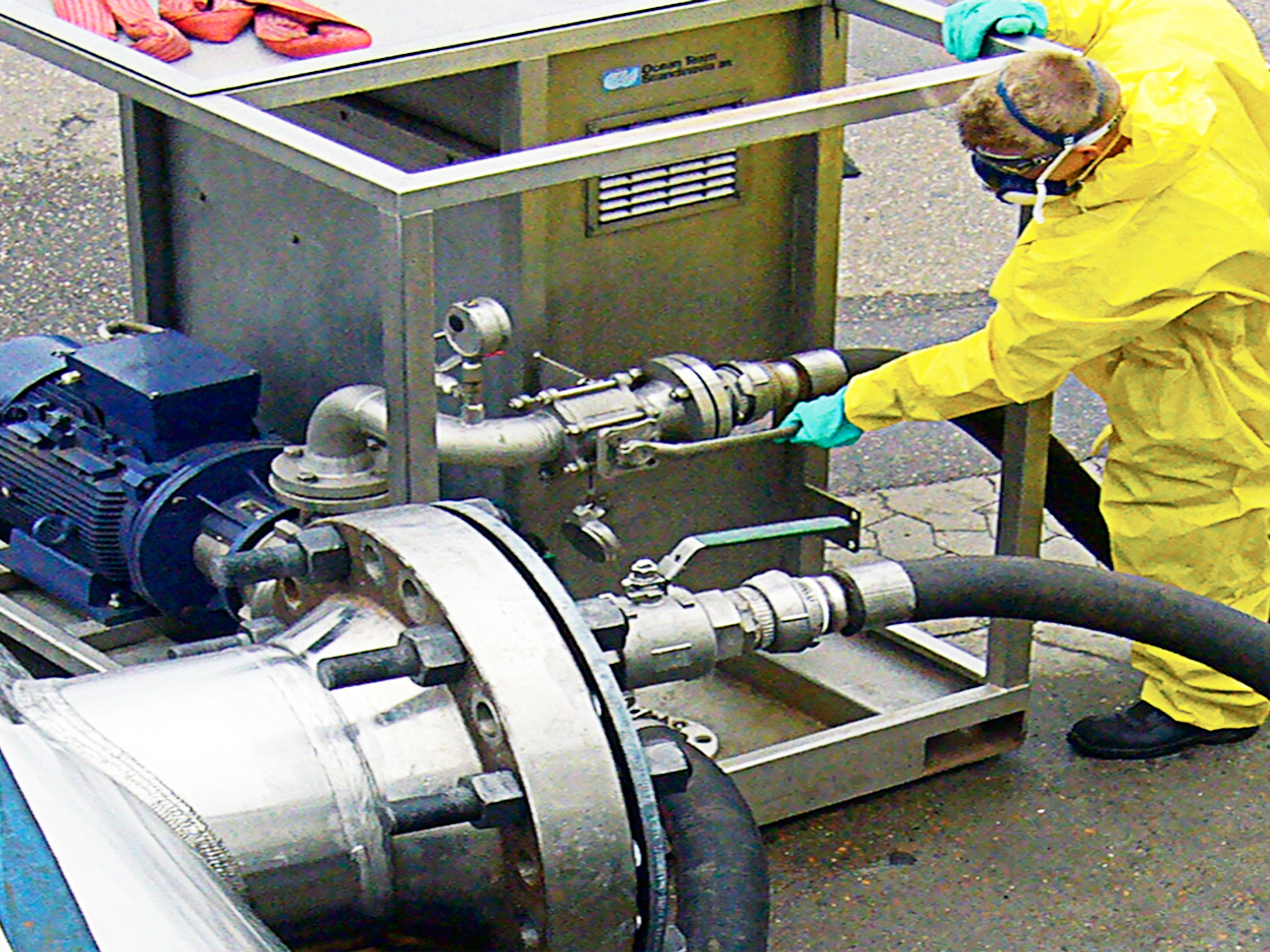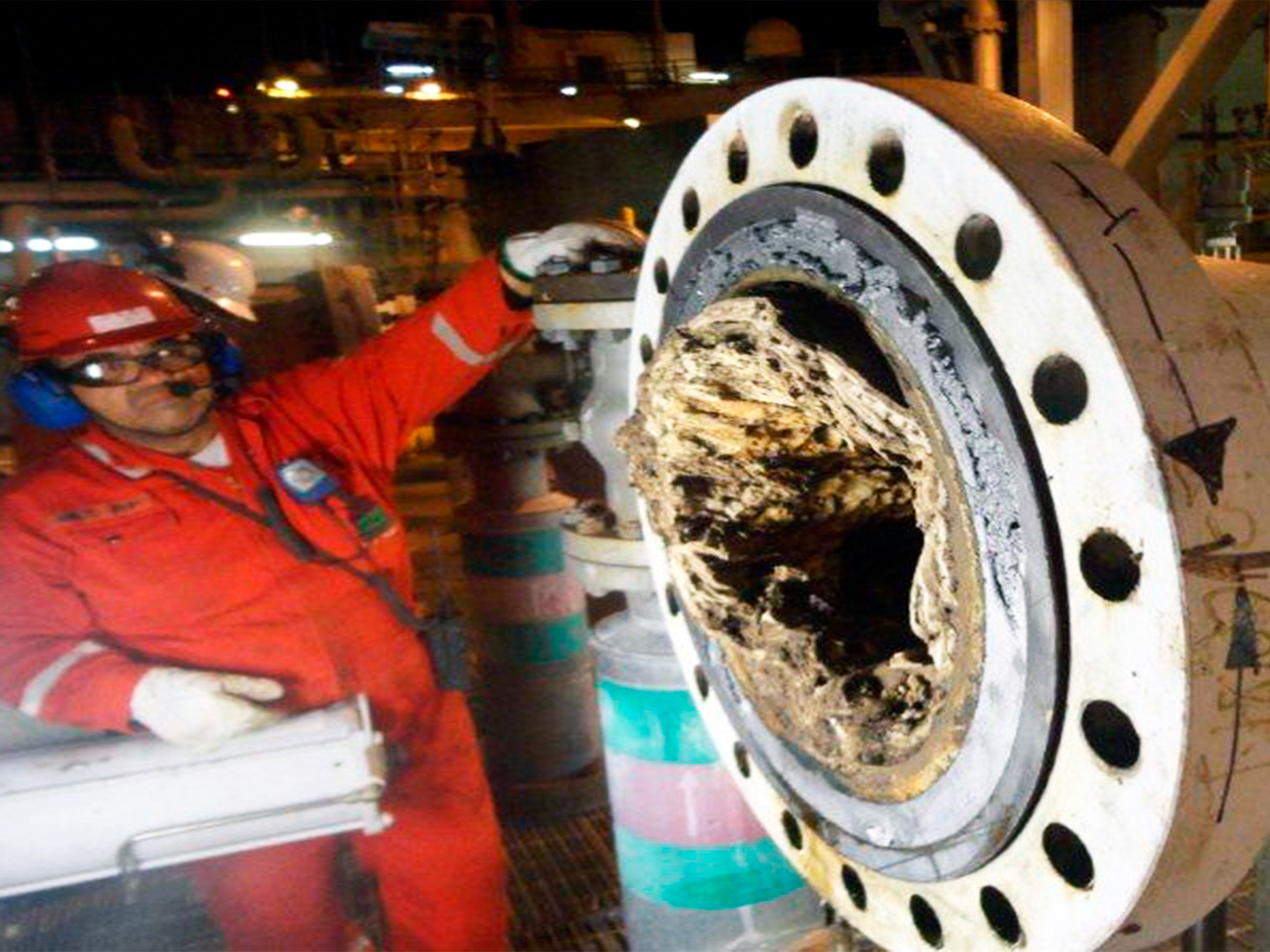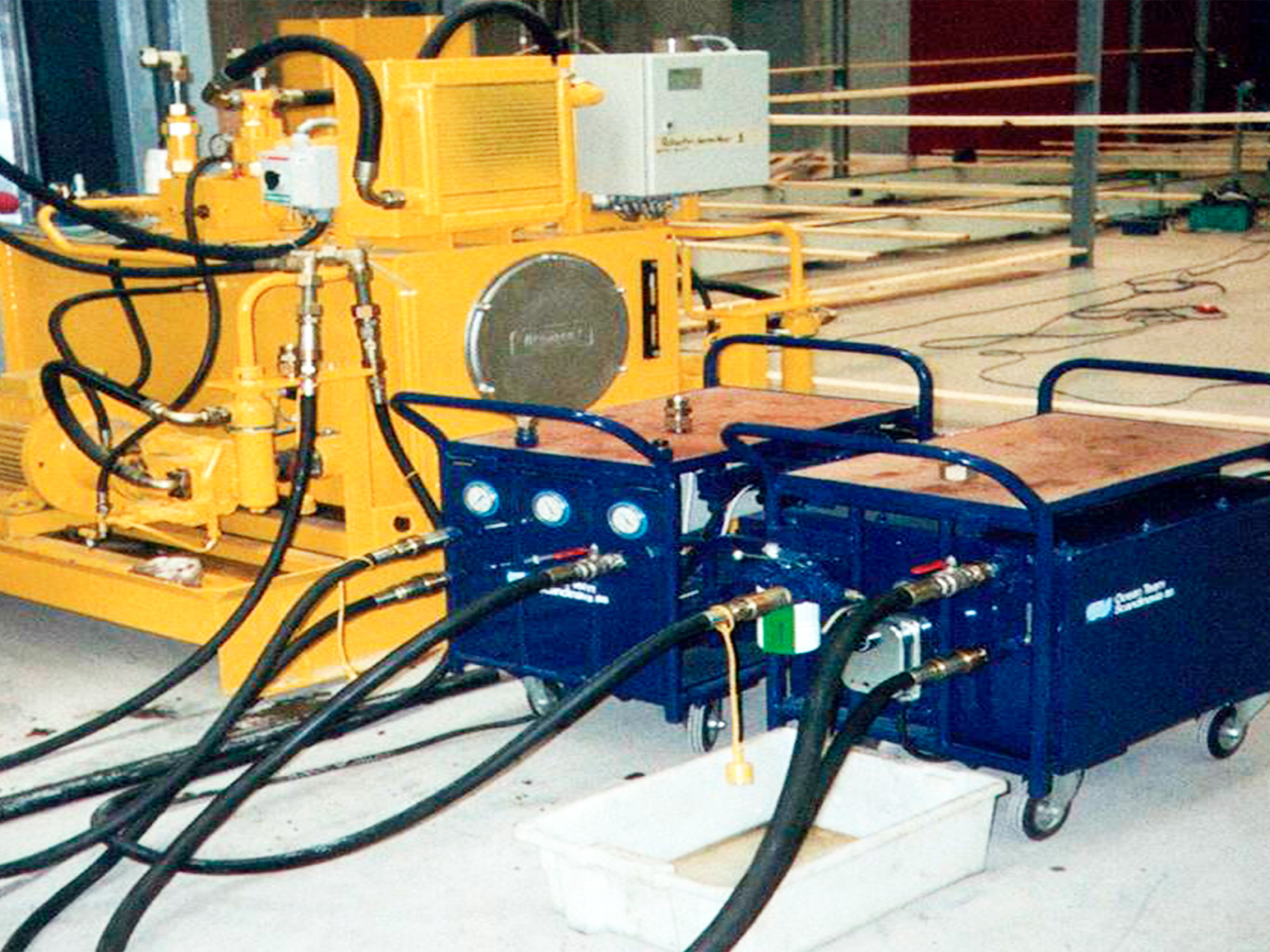Turbulent Flow
Generally, most hydraulic and lubrication oil systems are designed for “laminar” flow. This calls for constant operation without cavitations or vibration. Efficient flushing, however, requires turbulent flow in order to dislodge impurities deposited on the inside of the pipe system.Oil flushing is more than just connecting the systems, starting up and circulating oil through a filter, so-called “polishing”. Polishing will clean the oil, but not the pipe system.

A range of specifically designed equipment is used for various flushing jobs.
Flushing must be performed after pipe installation, but prior to system operation. For an oil flush to be successful, efforts to keep contaminants out must succeed and the flush must be conducted properly. A successful flush ensures that system piping and components meet acceptance criteria for a minimum length of time with a minimum of effort. At IKM Ocean Team we have great knowledge and experience in the area of flushing, offering valuable guidance before, during, and after flushing. You may read the following for a quick introduction to the rather complex area of flushing.

Practical jobs fulfilling flushing needs include both large and microscopic examples.
The Three most Important Parameters in Flushing are:
- Flushing filters
- Flow velocity
- Viscosity/temperature
Flushing Filters
A system’s permanent filters are not always sufficient to clean the flushing oil during flushing. Instead, special flushing filters can be used together with the mobile flush unit. Such filters increase filter capacity to a certain specified extent during flushing.
The filtration characteristics of the flushing filters are chosen on the basis of the degree of purity required by the supplier of the system.
The heart of any flush unit is the filter. If poor filters are used, flushing will be a long and costly affair.
With our many years of experience, we are able to choose the right filter for every job. This will save you time and money and the flushing will give you exactly the result, you want.

IKM Ocean Team has Worldwide experience performing flush with turbulent flow.
Flow Velocity
Flushing is most effective when flow velocity is relatively high and/or viscosity relatively low, creating turbulent flow in the pipe system during flushing.
Turbulent flow is obtained if the Reynold number is as follows:
RE = ((w x d x 1000) / v) > 3000
w = average flow velocity (m./s.)
d = inner pipe diameter (mm.)
v = kinematic viscosity in cSt.
If RE < 2000 the flow will remain laminar.
If RE is between 2000 and 3000 the flow will be “disturbed” turbulent.
If RE > 3000 the flow will always be turbulent.
IKM Ocean Team Case Story on Conventional Oil Flushing with Turbulent Flow
Viscosity
The viscosity of the flushing oil is of the utmost importance for determining the necessary flow velocity. Especially when flushing is performed where the oil cannot be heated sufficiently (e.g., in heavy frosts or strong winds), the kinematic viscosity of the flushing oil should be relatively low and the specific gravity relatively high.
On the other hand, viscosity should never be too low either, e.g., water with a viscosity of about 1 cSt., as impurities being torn loose might simply fall to the bottom of the pipe if the gravity of the liquid is unable to carry the particles out of the pipe system in the flow. Consequently, it is necessary to calculate the viscosity required to ensure that the particles are carried out to the filters.
Heating the flushing oil promotes the dislodgement of dirt, which can be embedded in grease; tectyl, etc. on the inner pipe walls. Furthermore, viscosity is reduced, facilitating the creation of turbulent flow. Flushing oil temperature should preferably be kept between 50°C and 60°C to prevent oil oxidation. If the flushing oil is to be discarded after use, or if flushing oil with high viscosity is used, it may result in increased temperatures, but never above 80°C.
The above parameters are of course just some of the parameters that need attention when performing a successful flushing. At IKM Ocean Team we plan all jobs carefully to ensure that the best result possible is obtained, with the least trouble for the customer. We focus on being quick, efficient, reliable and safe.